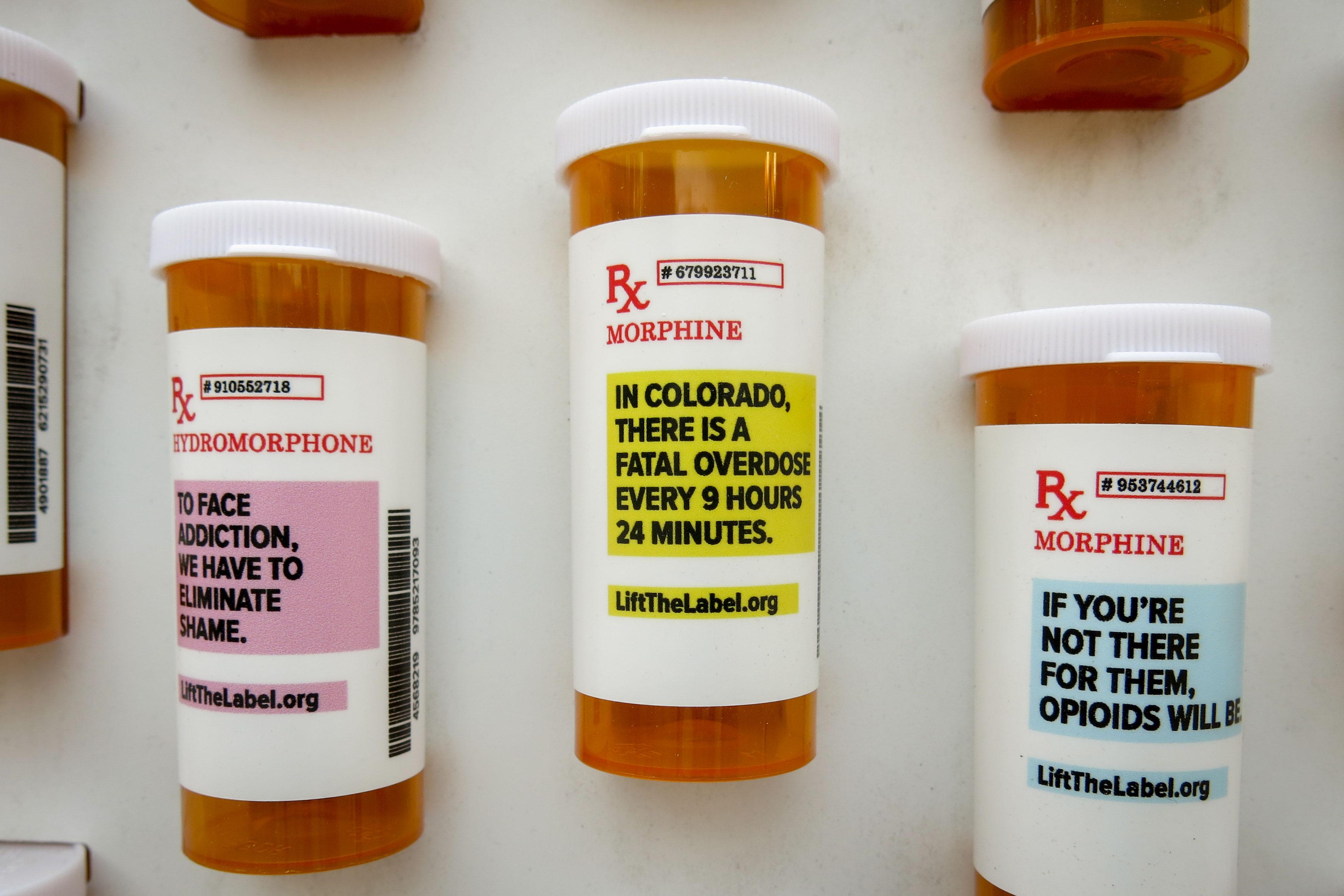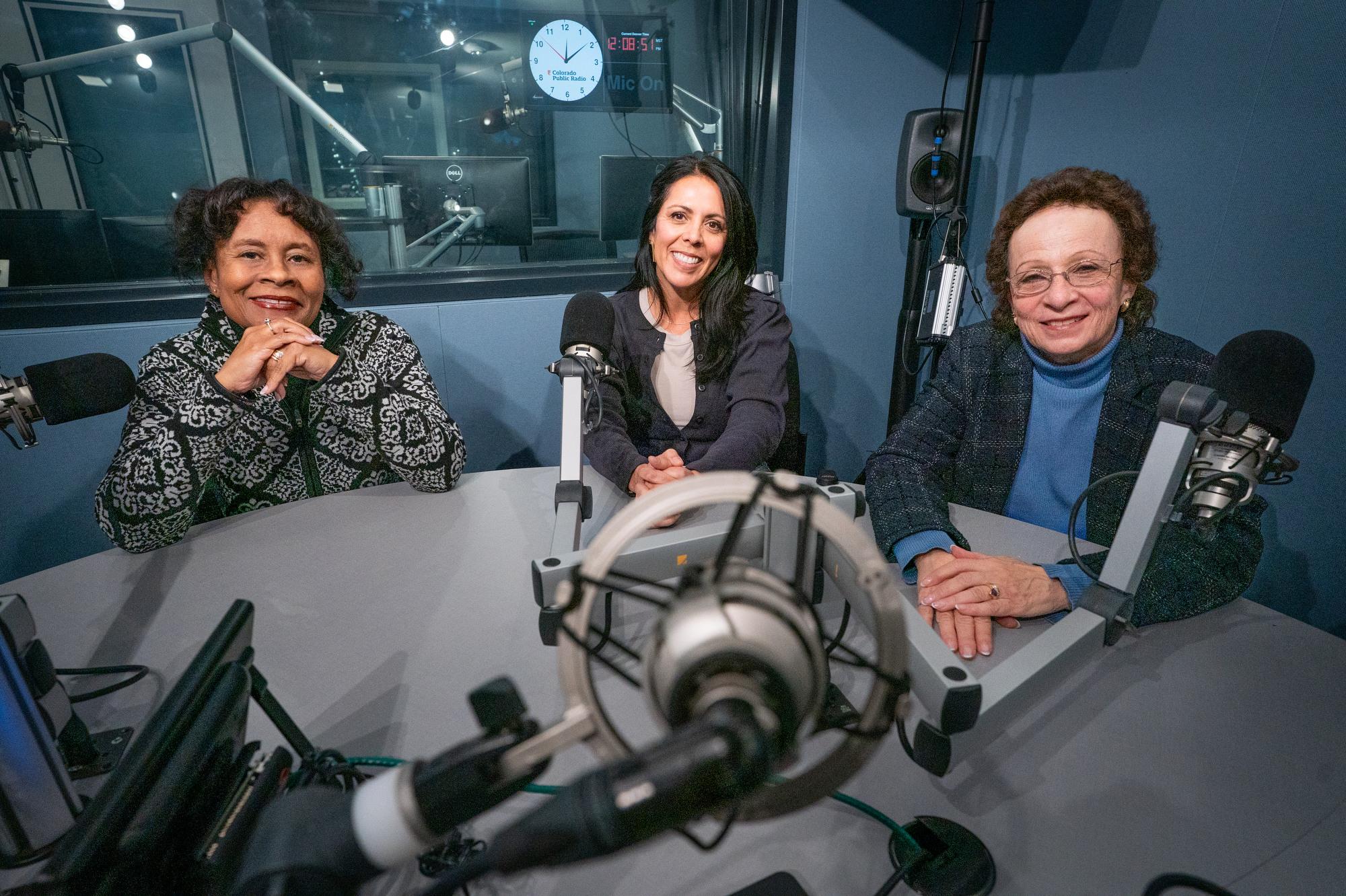

Colorado’s $1.8 million Lift The Label campaign is all about challenging the perceptions of people with opioid addiction and encouraging them to get help. The campaign leverages a memorial wall, as well TV and online ads and a detailed website to lift the taboo around addiction.
Former television reporter Dana Knowles, a married mother of three, is one of 15 Coloradans sharing their story. In one ad, Knowles spoke directly at the camera and said “I am a recovering opiate addict and this can happen to anybody.”
Knowles got hooked on prescription painkillers after hip surgery. She also was haunted by a painful childhood memory of being molested at a young age. Shame kept her from facing her pain.
“Where the stigma plays in is that I feel this low, low, low level of shame, which contributes to my sense of isolation and loneliness, and it makes me want to retreat,” Knowles said.
After her surgery, Knowles began self-medicating, eventually taking 15 pills a day. It got so bad she stole pills from friends, even her mom, who has rheumatoid arthritis. She says shame prevented her from facing her pain.
“It makes me not want to ask for help,” Knowles, who is now in recovery, said. “Because I don’t want to have to tell people all of these awful things that I’ve done to keep my addiction going and all of the lies I’ve had to make up along the way.”
Cristen Bates, the Director of Strategy, Communications and Policy with the state’s Office of Behavioral Health, said the key is to teach everyone that addiction is a brain disorder. It rewires the brain, and the craving for opiates becomes more important than food, water or sleep.
“It actually changes your brain chemistry,” Bates said. “It changes the chemicals in your brain like dopamine that are really essential for motivation. It changes the way that you’re able to think.”
Eighty percent of people who use heroin began misusing a prescription drug, Bates said. The Lift The Label campaign also provides information about medication-assisted treatment, using drugs like methadone. That treatment “helps a person’s cravings stop and gives their brain time to heal and get back to who they were before they started using.”
Research shows that treatment can be effective at least 60 percent of the time, Bates said, but there’s a stigma against it too. Now the state is training hundreds of primary care providers how to prescribe one of the three federally-approved medication-assisted therapy drugs.
The campaign website provides an array of information, including stories of addiction, tips for recognizing signs of addiction, and treatment resources like medication-assisted treatment.
Still there’s another type of humiliation opioid users can sometimes face: from healthcare providers.
Blair Hubbard, another face of the campaign said her opioid addiction started with pills from dental surgery. A few years later, she used heroin for the first time. She accidentally hit an artery, and ended up losing part of a finger. While in the ER she got an earful from a less-than-sympathetic doctor.
“The first thing he said to me was ‘Well I guess this is what happens when you make a dumb decision,’” Hubbard said. “A lot of shaming. A lot of making me feel pretty worthless, and as if there was no hope for me.”

One result of that scolding, she didn’t seek care and developed a heroin addiction that lasted five years. Ultimately, she turned to medication-assisted treatment, using methadone to kick her addiction. Hubbard is now a Behavioral Health Specialist at UC Health, counseling others with substance use disorders. She says she hopes to show patients there is hope through her own story.
Beyond the stories the campaign share, there’s the memorial wall for the opioid crisis that served as the backdrop to the campaign’s launch. It’s a wall created from thousands of pill bottles, individually symbolizing the tens of thousands of Americans lost to heroin and prescription drug overdoses. Each bottle has a sentence, like “addiction is a brain disease” or “judgment can be a death sentence.”
Another campaign story is from Austin Eubanks, one of the survivors of the 1999 Columbine High School shooting, who said he never processed the emotional trauma from that fateful day. Over a decade he became a heavy opioid user. His addiction finally landed him in jail, unable to recall what happened to him. It was a turning point.
Now in recovery, Eubanks is an expert in addiction treatment who urges people to talk about their troubles early, before hardcore use kicks in.
“Speaking out about it is what really helps to overcome that stigma, to help people engage in treatment much, much sooner,” Eubanks said.
Eubanks hopes the anti-stigma effort delivers a sense of optimism, that people can and do turn things around. As one person wrote on the back of the campaign’s memorial wall: We Do Recover.









